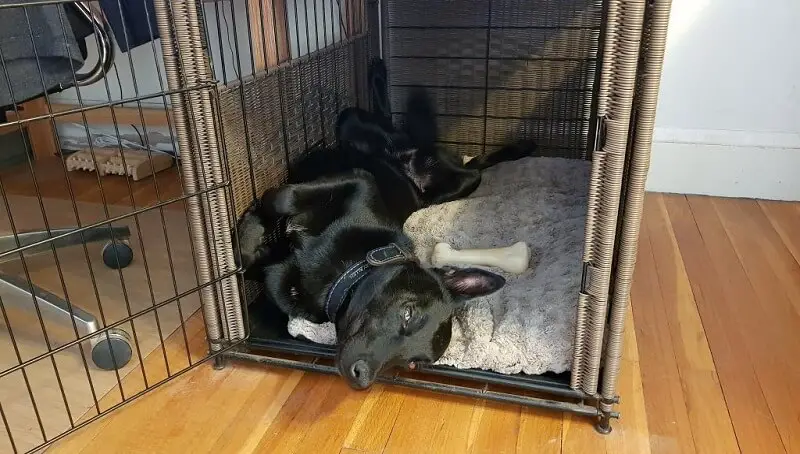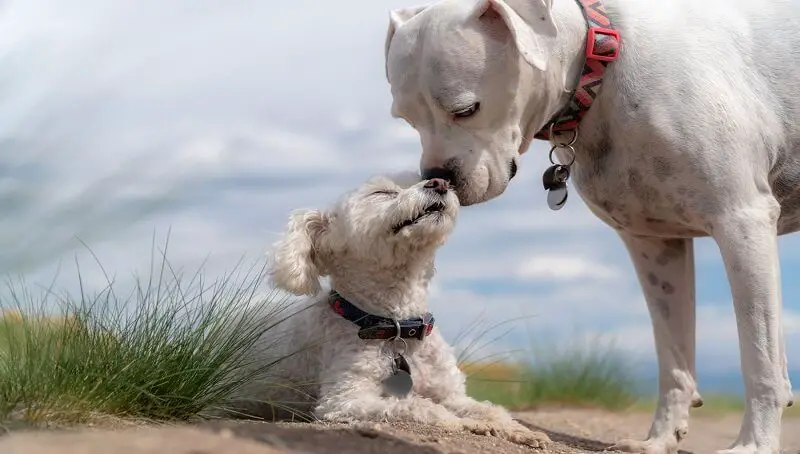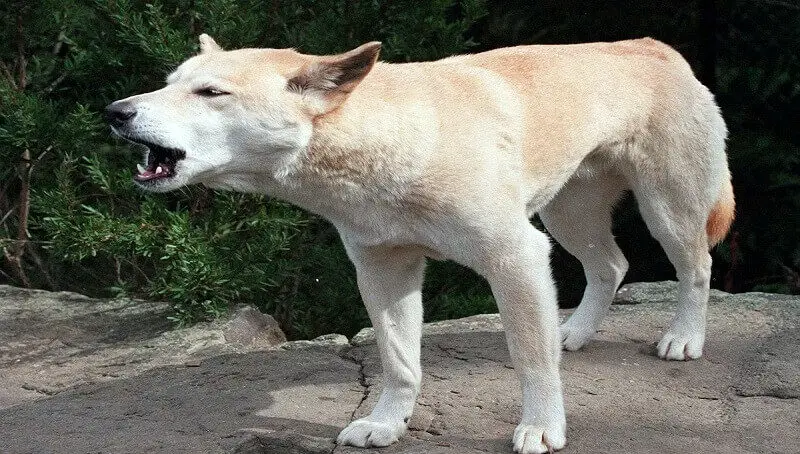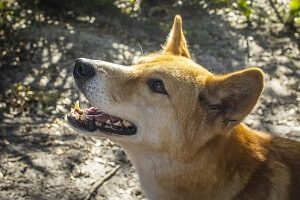
How Long Should a Puppy Be in a Crate?
October 6, 2022
How Old Does a Dog Have To Be to Breed?
October 6, 2022
Origin
The Dingo is a wild quadruped that is believed to be native to Australia. Indeed, it is found in this country, but it is native to Southeast Asia. The breed is also known as Canis familiaris Dingo or Canis Dingo. Other found names are Australian dingo, Australian native dog, Maliki, Warrigal, Noggum, Mirigung, Boolomo, and Dingo dog.
The name of the breed comes from the language of the Aboriginal Eora, who were the first inhabitants of the region in the Sydney area.
The dingo has as ancestors the wolves, Canis lupus, which have been tamed to some extent by humans and subsequently released into the wild.
It’s a medium-sized animal that doesn’t bark. It has straight ears, its tail covered with coarse hairs, usually red. Some of these quadrupeds have black tails with white and red spots, and others have it completely white.
Most dogs of this breed live in Australia and Thailand, but they can also be found in Myanmar, southern China, Laos, Malaysia, Indonesia, Borneo, the Philippines, and New Guinea.
The fossil record shows that the breed was introduced to Australia about 3500-4000 years ago and that these four-legged have spread throughout the Australian continent, but also to the islands, except Tasmania.
Other scientists believe the dingo dogs were brought to Australia about 5000 years ago, long before the arrival of the first settlers, 50 000 years ago. They believe that dingo dogs were originally domestic animals, a hypothesis that was easily refuted.
You might also like my articles on lemmings, capybaras, and opossums.
The fact is that the dingo dogs had an important ecological impact, causing the extinction of several species of animals, including the marsupial wolf and the Tasmanian devil.
What does a dingo eat?
The dingo dog isn’t a very good runner, but it can travel great distances. Depending on the abundance of food, it hunts alone small mammals, or if it is in the pack, it can hunt kangaroos, elk, cattle, and camels.
In addition, it feeds on birds, reptiles, insects, and even fruits.
Appearance
The dog shows characteristics found in domestic dogs but also features reminiscent of the wolf.
The size of the dingo is average, it is 48-58 centimeters tall and weighs around 22-32 kilograms.
Larger sizes are found in males, as females are usually smaller. The eyes are very interesting because they can have shades of yellow and orange, and are very expressive.
The ears are small and straight and are always arched, unlike some breeds of dogs that have them dropped.
The fur is usually reddish, with a coarse tail, which can be both reddish and white, or black with white and reddish spots. But there are also dingo dogs that can have fur in cream shades, with white spots, or even black with brown spots.
Dingo behavior
 Unlike others, the dingo lives very well on its own and cannot be tamed. It is a very intelligent dog that has some special features, such as the ability to turn its head 180 degrees in both directions.
Unlike others, the dingo lives very well on its own and cannot be tamed. It is a very intelligent dog that has some special features, such as the ability to turn its head 180 degrees in both directions.
They also have the ability to use their paws in an exceptional way, being able to even open a door, thanks to the bottom part of their paws, which can rotate. The way they live is very interesting, they can live both isolated from each other and in groups of 3 to 12 specimens.
Most of them are part of a pack only during the breeding period, or while they grow the cubs together. For those who live in groups, there is a leader who has the most important role, and only it is allowed to reproduce to perpetuate the species. The others in the group are not allowed, and if they do, the offspring born will be eliminated.
It has no enemies, only the weakest of them are prey to eagles or snakes.
In the wild, dingo dogs live somewhere between 5 and 10 years, but in captivity, they can live longer than 18 to 20 years. This figure is quite impressive because most domestic dogs do not reach such a long lifespan.
The life span of dingo dogs generally reaches 10 years, but it happens that some do not live as long because of the importance of their fur, being often hunted for it.
Dingo dogs and humans
Another factor that causes their disappearance is that they interact very much with humans, by getting close to their homes, and with domestic dogs. There are now dogs that are not entirely wild, but a combination between the wild and the domesticated.
Unfortunately, the wildness of dingo dogs was demonstrated by a controversial case in Australia in 1980, in which a woman was accused of killing her own 9-month-old girl and imprisoned. To defend herself, the woman claimed that the little girl was eaten by these dogs. This could be proved by the presence of a piece of her clothes, 8 years later, near the nest of such a dog.
This was not the only situation of its kind, and there are other testimonies in which children were killed by these animals.
Reproduction
The dingo female can give birth to up to 8 puppies in a single pregnancy and brings them into the world in caves or in secluded places. When the female gives birth, usually around 5-6 puppies at a time, the other animals in the pack will help raise the little ones.
The dominant female will usually kill other puppies that are born in the pack. This is mainly because she wants other females to take care of her cubs rather than their own.
Puppies are breastfed for two months and remain with their parents for a long time.
Like wolves, the dingo only reproduces once a year.
Facts!
Technically, the dingo is not a breed of dog. They are only semi-domesticated and are more like wolves than dogs. So far, it is not clear whether the dingo has ever been fully domesticated. Some evidence suggests that they were once pets, but were abandoned and allowed to return to their wild state.
One of the longest structures in the world is a fence in southeastern Australia, which was built in 1920 to keep dingo dogs away from farm animals. With a length of more than 8000 km, the fence costs around $10 million a year for its maintenance.
